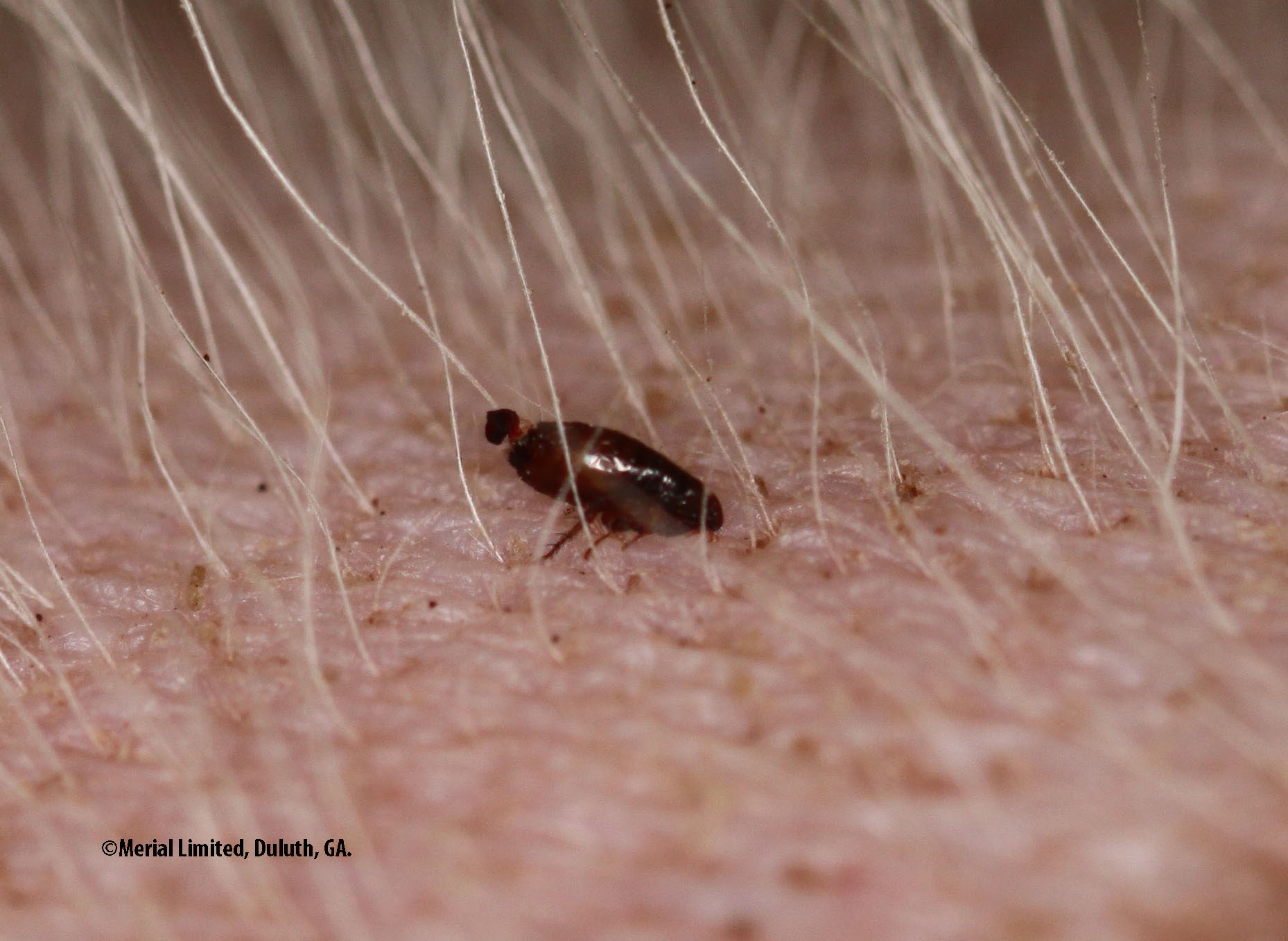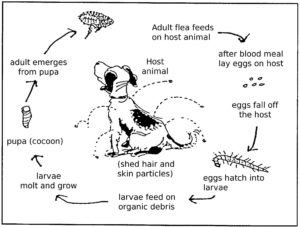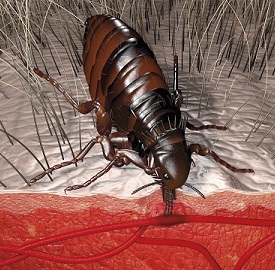
Fleas are a common source of itching in pet cats and dogs. Some animals are allergic to flea bites, and can be severely affected, while others will tolerate a lot of fleas without their owner even realising.
What are fleas?
Fleas are insects which have a 4 stage life-cycle: eggs, larvae, pupae and adult fleas. Only adult fleas live on the pet – the rest live in your home and garden environment. Female fleas can produce over 2000 eggs in their life-time, so live fleas seen are only the tip of the iceberg. The whole life-cycle can take a few weeks through to 6 months; the pupae are very resilient and can lie dormant until the right conditions for hatching.
Adult fleas suck the blood of the pet and produce faeces which look like tiny black dots in the pet’s fur. Flea bites can cause anything from mild irritation through to a severe allergy in your pet. Fleas also transmit a type of tapeworm (Dipylidium caninum) and some other infections.
How do I know if my dog or cat has fleas?
In some pets you will see the fleas running through the fur, on the skin. Fleas are very small (approximately 1-2mm) and dark brown, and can run very fast, as well as jump. They can be difficult to see, especially in pets with long fur, but you may find them if you comb through your pet using a nit comb. Another test is the ‘wet paper test’ – ruffle your pets fur over a piece of damp white paper. Tiny black dots which turn red on the paper are suggestive of flea dirt (flea faeces).
Usually your pet will be itchy, in cats this may just mean they are grooming a lot. Dogs are usually most itchy over their rump and back legs, and they can scratch so much that they go bald and get sore skin. Cats who are allergic to flea bites may get little scabs over their skin, sore patches or they may go bald in areas. If your pet has signs like this it is best to get them checked by a vet, as they may need treatment for the itchy/sore skin as well as for the fleas themselves.
In our 2nd article we cover treatment and prevention of a flea infestation.


